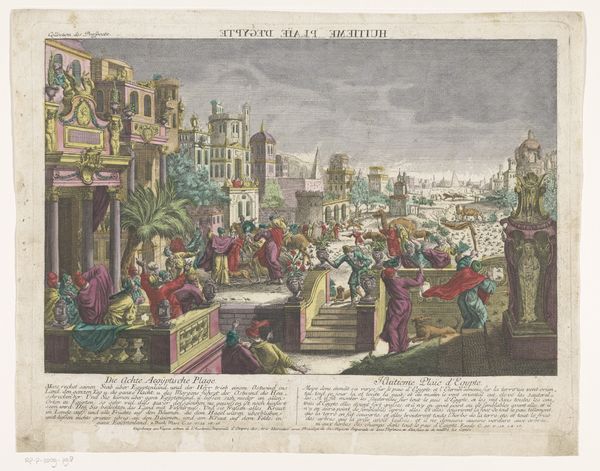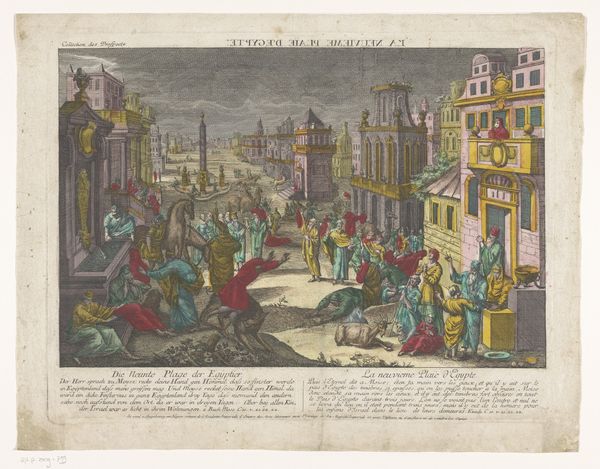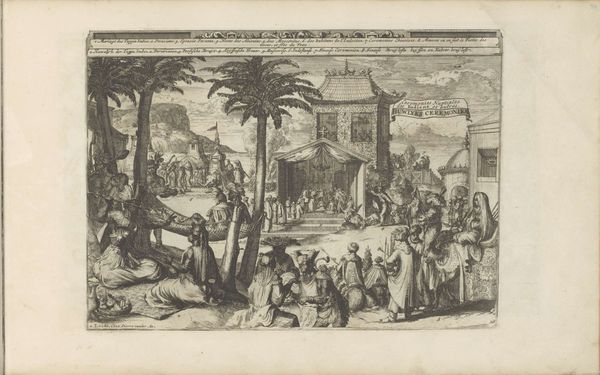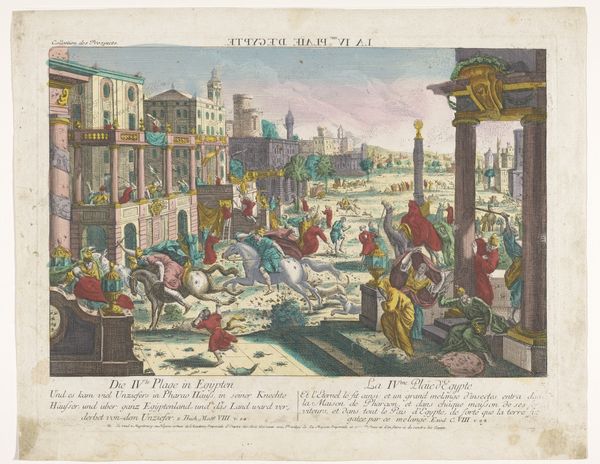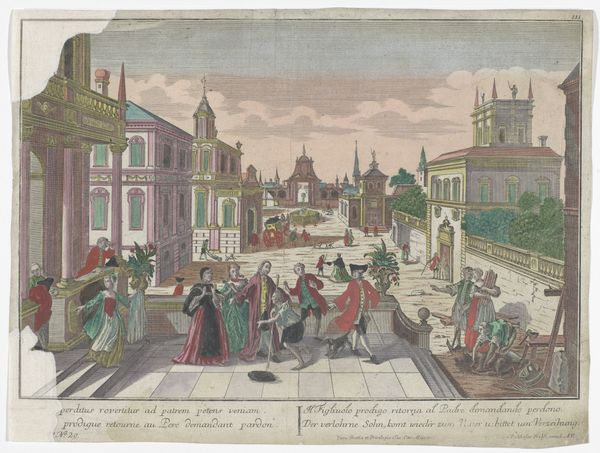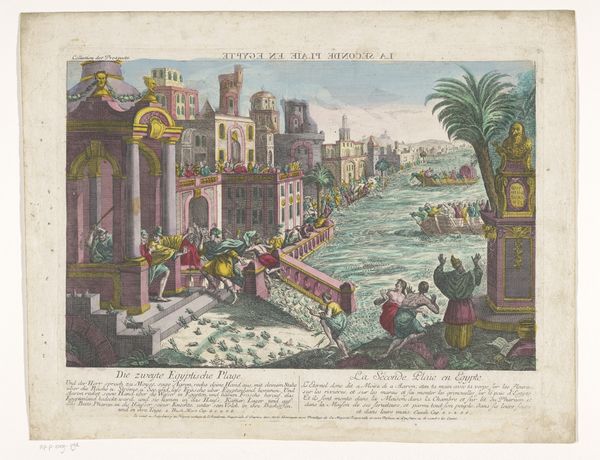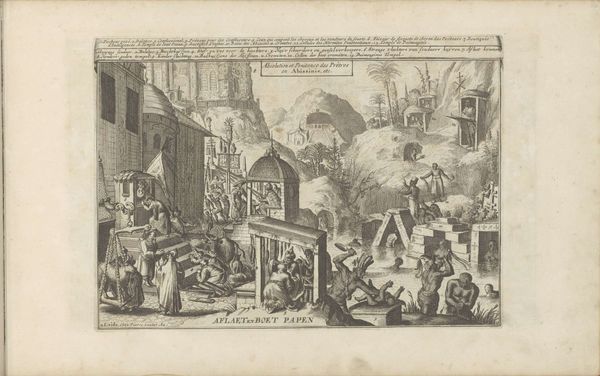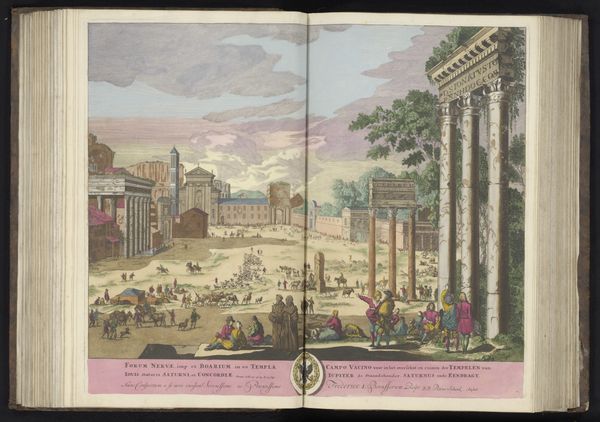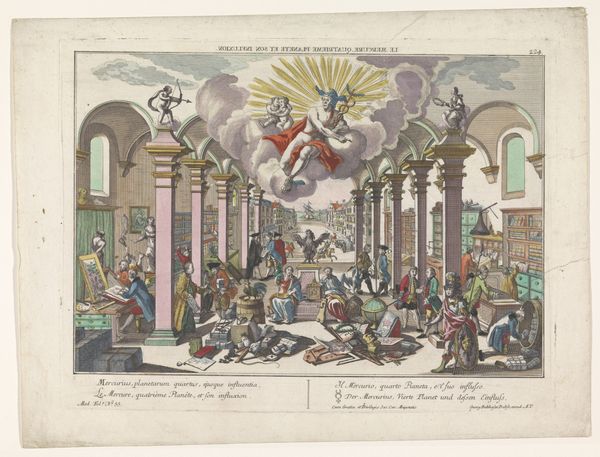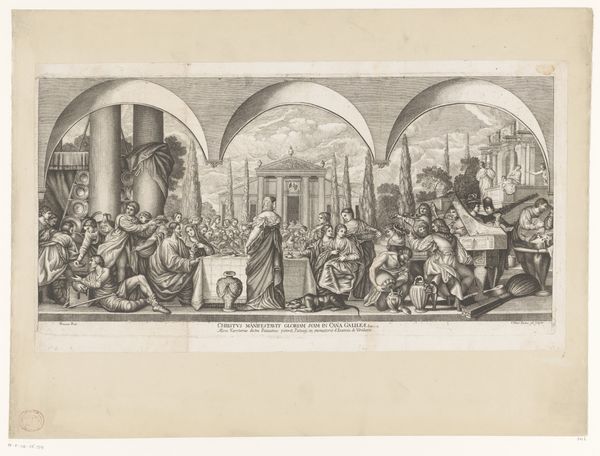
painting, print, etching, watercolor
#
water colours
#
narrative-art
#
painting
# print
#
etching
#
landscape
#
watercolor
#
coloured pencil
#
cityscape
#
history-painting
#
academic-art
#
watercolor
Dimensions: height 330 mm, width 433 mm
Copyright: Rijks Museum: Open Domain
Editor: We’re looking at "The Third Plague of Egypt," an etching and watercolor from sometime between 1755 and 1779, currently held at the Rijksmuseum. It's incredibly detailed; you can see so much life packed into this cityscape. What stands out to you? Curator: What immediately grabs me is the representation of power and how it's visually negotiated. Notice the distinct areas—opulent structures on one side, figures seemingly afflicted and pleading in the foreground. The plague becomes a potent symbol of social disruption and divine judgment cast upon Pharaoh and his power structures. Editor: That’s interesting. So, is the artist suggesting something about the ruling class through this plague imagery? Curator: I believe so. Consider the context: 18th-century Europe witnessed increasing social and political upheaval. Images like these weren't just biblical illustrations; they subtly reflected anxieties about social order and divine intervention in human affairs. The very act of depicting this biblical scene allows for commentary on contemporary power dynamics. Editor: I hadn’t thought of it that way. It's not just a historical event, but a political statement aimed at contemporary audiences? Curator: Exactly! The placement of the "afflicted" people directly below suggests a visual hierarchy mirroring the existing social strata. Are the pyramids meant to give perspective of scale of judgement against the Pharaoh’s lands, his false Gods? How is public opinion and sentiments swaying? Editor: It makes me consider how art uses historical narratives to critique current events. Curator: And that's crucial. These images gained cultural and political potency, especially if widely distributed and interpreted within the framework of popular piety. How many editions were in circulation, where were they circulated? The more it speaks about, and to, us as public citizens. Editor: Thank you. Now, I’m thinking a lot more about art’s function in socio-political discussions. Curator: Precisely! Considering a piece's reception alongside its creation deepens our comprehension immensely.
Comments
No comments
Be the first to comment and join the conversation on the ultimate creative platform.

